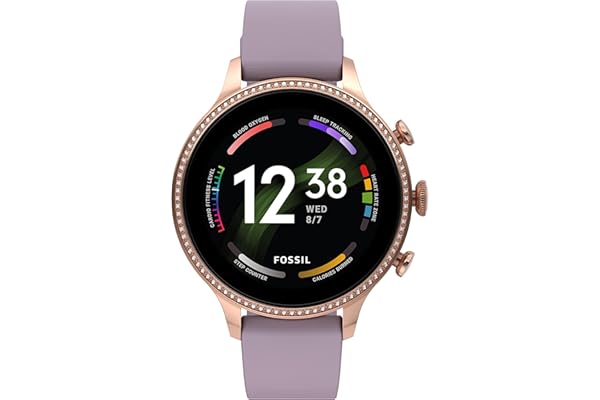Solar Watches: How They Work and What Are Their Advantages?
Contents
Introduction to Solar Watches
Solar watches have become an increasingly popular choice among consumers who are looking for environmentally friendly and low-maintenance timepieces. These watches harness the power of light, whether from the sun or artificial sources, to keep the watch running without the need for regular battery changes. This technology is not only innovative but also offers numerous benefits that appeal to a wide range of users. In this section, we will explore the basics of solar watches, including their history, the technology behind them, and why they have become a favored option for many.
The concept of solar-powered watches dates back to the 1970s when the first models were introduced. These early versions were relatively bulky and expensive, but they paved the way for the more sophisticated designs we see today. The evolution of solar technology has significantly enhanced the efficiency and reliability of these watches, making them a viable alternative to traditional battery-operated watches.
At the core of solar watches is a photovoltaic cell, which is responsible for converting light into electrical energy. This energy is then stored in a rechargeable battery, allowing the watch to continue functioning even in the absence of light for extended periods. The photovoltaic cells used in modern solar watches are highly efficient, capable of generating power from both natural and artificial light sources. This versatility makes solar watches an excellent choice for individuals with active lifestyles or those who frequently travel.
The Mechanics of Solar Technology in Watches
The technology behind solar watches is both fascinating and complex, involving a combination of photovoltaic cells, rechargeable batteries, and energy-efficient movements. The photovoltaic cells are typically located on the watch’s dial, where they are exposed to light. These cells are made from semiconductor materials, such as silicon, which have the ability to absorb photons from light and release electrons, creating an electric current.
Once the photovoltaic cells generate electricity, it is stored in a rechargeable battery. This battery is specifically designed to hold a charge for a long duration, ensuring that the watch can operate for months, or even years, without exposure to light. The energy-efficient movements used in solar watches further enhance their longevity by minimizing power consumption. These movements are often quartz-based, providing precise timekeeping while requiring minimal energy.
One of the key advantages of solar technology in watches is its ability to eliminate the need for regular battery replacements. This not only reduces maintenance costs but also minimizes environmental impact by decreasing the number of disposable batteries that end up in landfills. Additionally, solar watches are designed to withstand various environmental conditions, making them suitable for outdoor activities and rugged use.
Benefits of Owning a Solar Watch
Solar watches offer a myriad of benefits that make them an attractive choice for both watch enthusiasts and casual users. One of the most significant advantages is their eco-friendliness. By harnessing renewable energy from light, solar watches contribute to reducing carbon footprints and promoting sustainable living. This is particularly appealing to environmentally conscious consumers who are looking to make responsible choices in their everyday lives.
Another major benefit of solar watches is their convenience. Unlike traditional watches that require regular battery changes, solar watches can operate for extended periods without any intervention. This makes them an ideal option for individuals who lead busy lives or those who travel frequently and may not have easy access to watch repair services. The ability to charge from both natural and artificial light also adds to their convenience, ensuring that the watch remains functional in various settings.
In addition to their practical advantages, solar watches are available in a wide range of styles and designs, catering to diverse tastes and preferences. From sleek and minimalist models to more intricate and feature-rich options, there is a solar watch to suit every style. This variety ensures that consumers can find a solar watch that not only meets their functional needs but also complements their personal style.
Challenges and Considerations of Solar Watches
While solar watches offer numerous benefits, there are also some challenges and considerations to keep in mind when choosing a solar timepiece. One of the primary concerns is the initial cost, as solar watches can be more expensive than their battery-operated counterparts. However, this cost is often offset by the savings on battery replacements and the extended lifespan of the watch.
Another consideration is the reliance on light exposure to maintain the watch’s charge. While modern solar watches are highly efficient and can operate in low-light conditions, prolonged periods of darkness can eventually deplete the battery. For individuals who frequently wear their watches under sleeves or in dimly lit environments, this may be a potential drawback. However, most solar watches can hold a charge for several months, mitigating this concern for the majority of users.
Additionally, the integration of solar technology may impact the design and aesthetics of the watch. The presence of photovoltaic cells on the dial can influence the overall appearance, which may not appeal to all consumers. However, advancements in design have led to more seamless and aesthetically pleasing integrations, allowing manufacturers to offer solar watches that are both functional and visually appealing.
The Future of Solar Watches
The future of solar watches looks promising as technology continues to advance and consumer demand for sustainable products grows. Innovations in photovoltaic cell efficiency and energy storage are expected to enhance the performance and appeal of solar watches even further. As manufacturers continue to refine their designs, we can anticipate a broader range of styles and features that cater to an even wider audience.
Moreover, the growing emphasis on environmental responsibility and sustainability is likely to drive increased interest in solar watches. As consumers become more aware of the environmental impact of their purchasing decisions, solar watches offer a compelling solution that aligns with eco-friendly values. This trend is expected to contribute to the continued popularity and adoption of solar watches in the coming years.
In conclusion, solar watches represent a unique fusion of technology and sustainability, offering a practical and environmentally conscious alternative to traditional timepieces. With their numerous benefits and the potential for future advancements, solar watches are poised to remain a significant and innovative segment of the watch industry. Whether for their eco-friendly attributes, convenience, or diverse design options, solar watches are a worthwhile consideration for any watch enthusiast or environmentally conscious consumer.






